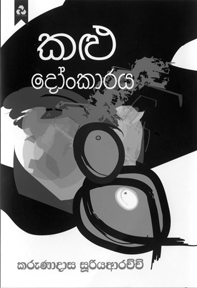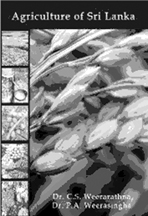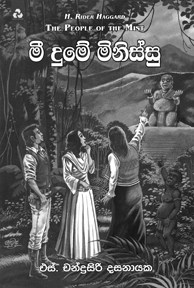|

Humanity vs inhumanity
Reviewed by Daya Dissanayake
This is probably the first story to be told by a new born infant; a
baby born to a teenage mother who was trying to escape across Nandikadal
Lagoon, during the last days of the 30-year-old war.
 |
|
Kalu Donkaraya
Karunadasa Sooriaarachchi
Published by Dayawansa Jayakody & Co. |
Karunadasa Sooriaarachchi, or Kasuri as he is better known, has once
again displayed his skills at moving away from the stereotyped Sinhala
novel, to experiment with new ideas and new ways of presentation.
Once again he has been successful with his latest novel, Kalu
Donkaraya, after his previous effort with Andakara Tharakava. Which was
short-listed for the 'Swarna Pushthaka 2009'.
As I read Kalu Donkaraya there were times when I felt as if I was
reading a sequel to 'When Memory Dies' by Sivanandan.
Kasuri seems to have taken off from where Sivanandan stopped. If only
someone could translate Sivanandan to Sinhala and Kalu Donkaraya to
English, and both books to Tamil.
War novels have come out in every country, during the entire history
of literate man, trying to tell us the tragedy of war and trying to help
mankind to learn from the past.
Each writer has his own way of seeing and presenting their story.
Kasuri who appears to be improving his style and creativity from one
book to the next, and developing his own identity in his style and
presentation shows how well he has mastered the Sinhala language in Kalu
Donkaraya to paint a sensitive picture of the war ravaged country, in a
creative manner.
He brings to us the devastation after a bombing raid, butterflies
with burnt wings, roses with crushed petals, magpies (polkichchas) with
broken beaks. He describes the warmth a baby finds in the dead body of
her mother, the strength a teenage mother gets from the baby in her
womb, a baby she had to conceive, to avoid being taken away by the 'Podiyals',
mothers encouraging their young daughters to conceive so they would not
be conscripted (an opportunity denied to the young boys).
Mother Earth
I felt that this teenage mother, Meena, is motherhood personified.
She is Mother Earth. That is why she could say that history is written
either in tears or in blood. What is written using tears will fade away,
but what is written in blood will be eternal.
A mother always suffers the worst in any form of violent conflict,
because almost always she has to suffer in silence.
A father or a brother or a husband could try to ease the pain in a
more active way, by meeting violence with violence, or with physical
resistance. It is the mother who misses the child who had joined the
Armed Forces, or had been forcibly conscripted, who spends sleepless
nights, wondering where her son is, what he is going through, fearing
the moment of the arrival of bad news, or sometimes, knowing that she
would never learn the fate of her child.
This book reminds us of this sad truth through the infant, through
her mother Meena and grandmother Kanmani.
The story which moves slowly in the first half, picks up speed later
on, becoming almost too rapid, perhaps because the end of a thirty-year
conflict also ended unexpectedly rapidly.
Had the author taken us through the last few weeks or days also at
the same pace and with the kind of detail he gives us about the early
part of the story, it would have added more weight to the story and
given us a clearer picture of the last days of the war.
Unless the author had no option but to run the happenings of the last
few weeks on 'fast forward', because time was running out for Meena to
continue the conversation.
The title Kalu Donkaraya, identifies the darkness that surrounded and
smothered the poor and the helpless trapped in the war zone. It
symbolises the black acrid smoke rising from the burning vehicles,
houses and even human beings, and tries to take our mind back to one of
the darkest days in our country, the 'Black July'.
True human beings
Yet, at the same time it reminds us that there were a few true human
beings in Colombo, who could defy the beasts in human guise, men who had
risked their own lives to save their fellow men.
Thus Kasuri shows us the humanity that is found among strangers, who
are all in trouble, facing inevitable death, and also the inhumanity of
others, who would sell a packet of milk powder for Rs. 2,000, or a
bottle of hot water for Rs. 500 to a starving expectant mother.
He has shown us the instinct for survvial, the courage and
determination and the undying hopes, loving kindness for living beings,
even for the cow they had to leave behind, the exploitation of the
innocents by the politically motivated and the greedy, which has been
the story of humanity.
A story which would echo and re-echo well into the future.
Useful Academic Journal
The ICASL Golden Jubilee Journal published to commemorate the 50th
anniversary of the Institute of Chartered Accountants of Sri Lanka is an
useful academic journal that could be of much benefit to students,
academics, financial sector and to those who have interest in Business
and Commerce. ICASL though primarily being a regulator and an
Educational institute has appropriately provided an ideal mix of
critical elements of commerce such as Financial reporting of auditing
standards, fair value debate, stability of financial institutions
presenting wealth of information in an era that has been marked by
financial excesses, mismanagement, government bailouts, large scale
unemployment across the globe, marking one of the worst financial crisis
in the Industry.
 |
|
Institute Of Chartered Accountants of
Sri Lanka Golden Jubilee Journal
Published by Institute of Chartered Accountants of Sri Lanka
Edited by Sunil Karunanayake |
The opening article by Chartered Accountant cum Agriculturist B R L
Fernando on thoughts of Sri Lanka its Environment and Agriculture that
makes the reader refreshed from the beginning provide a good insight in
to Country's Agriculture resources and water management.
This is a pleasant departure from mundane Accounting that would
normally provide the beginning.
It is interesting to note the presentation on the evolution of the
auditing profession in Sri Lanka by former partner of Ernst and Young
Tissa Bandaranayake that gives a good insight in the transformation of
the auditing, simple process to a much regulated profession. He writes
that way back in the 12th Century AD stone inscription was made by King
Nissanka Malla making reference to the need for records of the Royal
Treasury to be examined by a second person to ensure accuracy that is
now known as Auditing.
This indeed is an interesting piece of revelation that should be
noted by the Historians.
The Article also gives a brief account of development of accounting
standards and the pioneering role played by the Institute of Chartered
Accountants of Sri Lanka during the last fifty golden years.
Professional liability has been very much a debate in this country and
this is well detailed by the well-known Lawyer and academic Dr. Wickrama
Weerasooriya. Auditor General, S. Swarnajothy, a Chartered Accountant
himself has chosen much discussed topic of the contemporary times in
good governance public accountability in audit.
He elaborates scope and authority of the audit as per the
constitution and the role and the authority of the Auditor General in
this exercise. Electronic revolution has transformed the way a man does
business and has brought about a great transformation in the Law giving
birth to which is now known as "E Commerce". Hon. Justice Saleem Marsoof,
PC Judge of the Supreme Court of Sri Lanka, and eminent Jurist
elaborates in a lengthy article the evolution of the E commerce and the
legal provisions affecting the Electronic Transaction Act that is
currently in force.
The contribution by Dr. Harsha Cabral on corporate responsibility of
the Directors is a useful guide in the wake of the new Company
legislation.
The lay out and the presentation befits the occasion and the
Institute of Chartered Accountants should be lauded for their bold
approach in producing an publication with the correct blend of
Accounting, Auditing, Finance, Legal and Human Resource Management
catering to the needs of modern day commerce. Another noteworthy feature
is the contributions from eminent members of the ICASL like Professor
Lakshman Alles, Ms. R Vijajasekeran and T. Sivathondan who are now
overseas.
It seems that Editor Sunil Karunanayake has used years of his
Business journalism to good measure in producing a well-compiled
publication.
Agriculture of Sri Lanka
Agriculture sector plays a very important role in the economy of the
country. At present the plantation sector and the cultivation of
domestic crops constitute the agricultural sector of Sri Lanka.
Around 80% of the people live in rural areas and their main income is
derived from crops.
 The book "Agriculture of Sri Lanka" written by Dr.C.S. Weeraratna, (a
former Professor of Ruhuna and Rajarata Universities, and presently the
Chairman, of Sugarcane Research Institute) and Dr. P.A. Weerasingha
(Dean of the Faculty of Agriculture of Rajarata University) provide
basic data related to agriculture of Sri Lanka, and it gives in a
nutshell the most current data related to plantation and domestic
agriculture of Sri Lanka. The book "Agriculture of Sri Lanka" written by Dr.C.S. Weeraratna, (a
former Professor of Ruhuna and Rajarata Universities, and presently the
Chairman, of Sugarcane Research Institute) and Dr. P.A. Weerasingha
(Dean of the Faculty of Agriculture of Rajarata University) provide
basic data related to agriculture of Sri Lanka, and it gives in a
nutshell the most current data related to plantation and domestic
agriculture of Sri Lanka.
This book will be a great asset for planners and others who are
involved in development of the Sri Lanka's agricultural sector.
The book encompasses the basic features of the country, its natural
resources, topography, climate, rocks, soils and water resources and
discusses in detail the present status of plantation and field crops,
including fruits and vegetables cultivated in Sri Lanka, and those
institutions involved in agricultural research, extension and training.
The Book priced at Rs. 500/=, also has 12 maps/ pictures depicting
various aspects of climate, rocks soils and agriculture of Sri Lanka.
It also has 37 Tables containing data on a number of issues such as
climate and Land Use of Sri Lanka, the role of the plantation crops
cultivated in Sri lanka on the economy of the country, extent under
these crops and their level of production, foreign exchange involved in
exporting/importing crops, etc.
The book is available at Sarasavi and Vijitha Yapa Bookshops.
The reality of Ravana
by Daya DISSANAYAKE
Ravana and Rama are in the news again. The Ministry of Tourism has
started a Ravana Trail, inviting Indians to our shores. Padma
Edirisinghe had written to the Sunday Observer (15/11/09) about Ravana.
The Hindustan Times reported that the Royal Asiatic Society, Sri Lanka,
had written to the Tourism Ministry. ".. a total travesty and a future
danger for the territorial integrity of Sri Lanka as there is no
historical evidence whatsoever about Rama and Ravana... I urge you to
immediately cancel this foolish and anti-national project". Janaka
Perera had also run denounced the Ravana Trail, in the Asian Tribune of
Nov. 20th.
It is difficult to fathom how this Ravana Trail could pose a danger
to our 'Territorial integrity', and how it could be an 'anti-national'
project. Unless the Tourism Ministry is trying to sell our country to
India because Rama defeated Ravana in battle, or unless Ravana was
Prabhakaran's ancestor!
 Today Rama and Hanuman are worshipped as Gods in India. Rama is
considered as maryada purushottam, the ideal person, epitomizing the
highest discipline expected of a human being, like in Ramacharitamanas
of Tulsidas. There are temples built for God Hanuman, because there are
people in India who believe in him, in his powers and they pray to him.
It has been reported that President Obama carries a small statue of God
Hanuman as a lucky charm. Today Rama and Hanuman are worshipped as Gods in India. Rama is
considered as maryada purushottam, the ideal person, epitomizing the
highest discipline expected of a human being, like in Ramacharitamanas
of Tulsidas. There are temples built for God Hanuman, because there are
people in India who believe in him, in his powers and they pray to him.
It has been reported that President Obama carries a small statue of God
Hanuman as a lucky charm.
I believe that Ravana was a great king who lived in Sri Lanka, that
he had also been a great physician, who had written five books on
indigenous medicine. There are people who believe in and worship God
Rama and God Hanuman. It is our right. Our privilege. No one on earth
can tell us that Rama did not exist.
That Ravana is a mythical figure, unless they can prove it. No one
can say there is no God. They cannot prove there is no God. We do not
have to prove to ourselves that God exists. The same way we do not have
to prove to ourselves that Buddha had been a real person, just because
someone says that Buddha never existed.
Rama is one of the Dasa Avatar of God Vishnu. Buddha is also
considered as a Vishnu Avatar. If Rama is a myth, then could the
Vaishnavites consider the Buddha also as a myth?
Rama was born at Ayodhya on 4th December, 7323 B.C. Hanuman arrives
in Lanka on 1st September 7292 B.C. Ravana is killed by Rama on 15th
November 7292 B.C. These dates had been calculated by Dr, Vrtak, in his
book, "Vastav Ramayana", from the dates given by Valmiki of the
positions of stars and planets. That Rama was born in Ayodhya is
disputed for religio-political reasons only. They have found a certain
amount of archaeological evidence and could find more if they continue
excavations.
RAS has argued that "if not for the Sage Valmiki there would have
been no Ramayana epic". There are Indian scholars who argue that if not
for Asoka, there would have been no Buddha nor Buddhism, because they
claim that Buddha was a creation of Asoka for his 'Dharmavijaya'. Do we
also reject Ramayana, as total myth but accept Mahavamsa as total truth?
Do we accept Vijaya and Pandukabhaya as real historical figures? If
civilization came with Vijaya, then who were the people who lived 600 or
700 years earlier at Uda-Ranchamadama?
Iliad was a myth, a work of fiction by Homer, till they discovered
the city of Troy in Northwestern Turkey.
Those who are trying to denounce the Hanuman Bridge are people who
want to promote the Sethu Samudra Project, another future monument for
corruption. We wonder what their response is to the NASA photos of the
bridge. It could also be of interest for the RAS Sri Lanka to note that
RAS Calcutta, in 1799, refers to the Ram's bridge.
We accept Buddha's place of birth as Lumbini, purely on the
inscription claimed to be left by Asoka in the Rummindei pillar
inscription. The place was pointed out to Asoka as the birth place of
the Buddha, by people who should have been able to recall an incident
which happened about 200 years earlier! Till then it had come down by
word of mouth. Just because it was written on stone, if it has to be
accepted as true, then any other inscriptions about Rama also should be
accepted as true. Then we should also accept the birth place of Buddha
Konagamana as the place where Asoka left his Nigalisagar pillar.
One of the Ramayana sites in Lanka is the Kelaniya Temple. If we deny
Ravana, we have to deny Vibeeshana who was crowned at Kelaniya, then do
we also deny the Buddha'a visit to Kelaniya? Are we to deny that Buddha
had left his foot print on Sri Pada just because there is no scientific
proof?
"For those who believe, no proof is necessary. For those who do not
believe no proof is possible". Stuart Chase.
Book launch
"Me Dume Minissu"
 S. Chandrasiri Dassanayake's latest book "Me Dume Minissu" will be
launched at Dayawansa Jayakody Book Exhibition Hall, Ven. S. Mahinda
Mawatha, Colombo 10 on December 8 at 10 a.m. S. Chandrasiri Dassanayake's latest book "Me Dume Minissu" will be
launched at Dayawansa Jayakody Book Exhibition Hall, Ven. S. Mahinda
Mawatha, Colombo 10 on December 8 at 10 a.m.
"Me Dume Minissu" is the authentic Sinhala translation of H. Rider
Haggard's popular work "The People of the Mist".
Dassanayake is the author of many other translations such as "Sendave
Sirakaruva", "Jamaika Thanayama", "Mantrakariyage Sirasa", "Pragnave
Diyaniya Ayesha", "Amen Deviyange Diyaniya", "Sheeba Reginage Muduva", "Arunodaye
Regina" and "Cleopatra".
"Me Dume Minissu" is a Dayawansa Jayakody publication.
 Computer Application Assistant Computer Application Assistant
"Computer Application Assistant" authored by Bimulka Adihetty which
targets the computer application assistant course, is a resourceful
publication.
It facilitates computerization of office management apart from
providing both theoretical and practical knowledge to the beneficiaries. |

